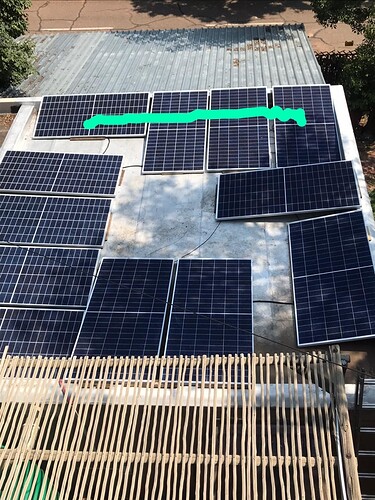Here’s some of mine:
(I might be a measurement junkie!)
The BNETA plug is not connected to anything specifically - I use it ad-hoc as necessary if I want to measure something. Since 1 Dec, the Christmas tree lights are connected to it 
The freezer surprised me a bit after running this plug for a couple of months (also a Tasmotized BNETA plug) – so much that I put a temperature sensor it it too. Turns out it seems to be running WAAAY too much, which also explains the frost buildup in side  . It ended up at around -26, -28. I now use Home Assistant to regulate it to -17.
. It ended up at around -26, -28. I now use Home Assistant to regulate it to -17.
The two laptops below are actually more than just those – screens, routers, my HA PC, POE switches running cameras, fibre ONT etc. Still, the “Packard Bell” one is actually also measuring my Macbook Pro and external screen, and I really noticed an increase when I started working from home.
My wife’s Macbook Air and external screen is the “Asus Laptop” (I know, confusing).
I too have a borehole, but I use it just for watering the garden (which I had to do quite heavily the last couple of days in December). Most of the time this runs during the window of 16:30 to 21:00 when I’ve programmed the system to run from the grid to save battery life for later the evening.
I also have a 4kW geyser, which I do run, but only if I have excess PV energy available or it is REALLY cloudy the day and the temperature isn’t where I want it – then it is from the grid. Unfortunately I don’t have the split between those two.
Interestingly, you can compare my Home Assistant measurements with the Victron VRM measurements:
So from grid: HA = 173.31 kWh, VRM = 160 kWh
From solar (including from battery): HA = 554.53, VRM = 469 kWh
Consumption: HA = 627.48, VRM = 629 kWh
I’m probably missing something in the “from solar” measurements…
EDIT: Realised as I posted this my Borehole monthly was 0 – something is misconfigured. I thus removed it and reposted the screenshot. Also figured it is time to fix some of the labels!


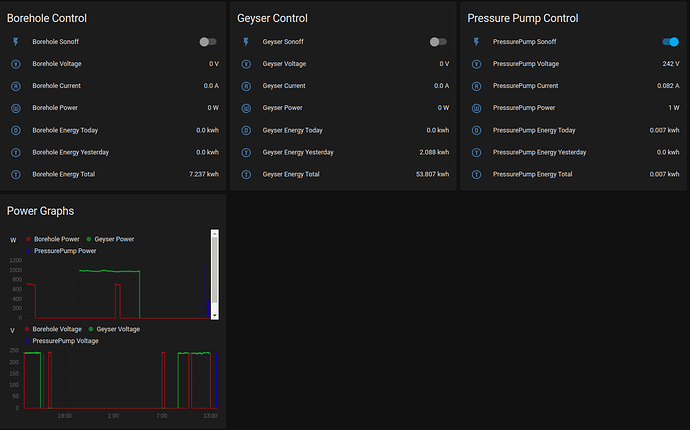
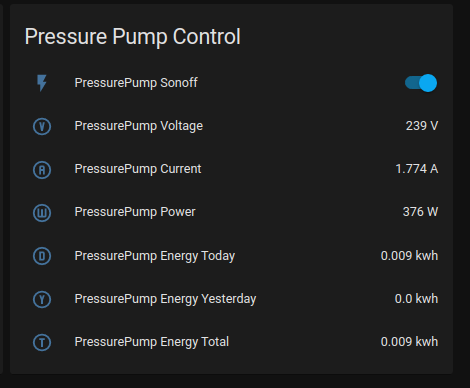
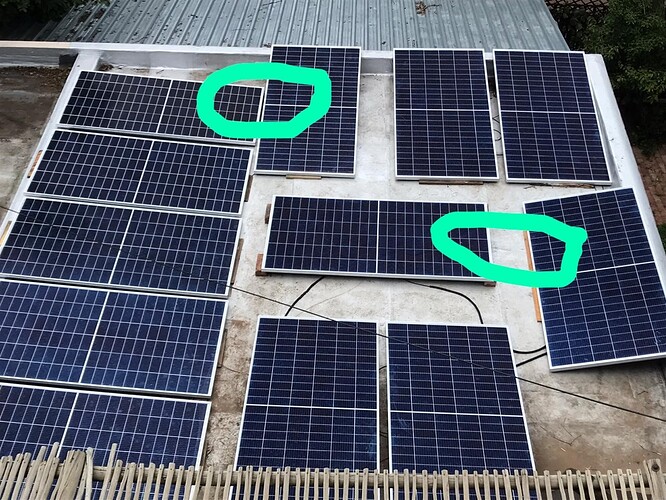

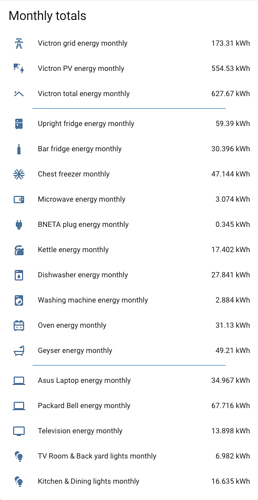

 . It ended up at around -26, -28. I now use Home Assistant to regulate it to -17.
. It ended up at around -26, -28. I now use Home Assistant to regulate it to -17.
